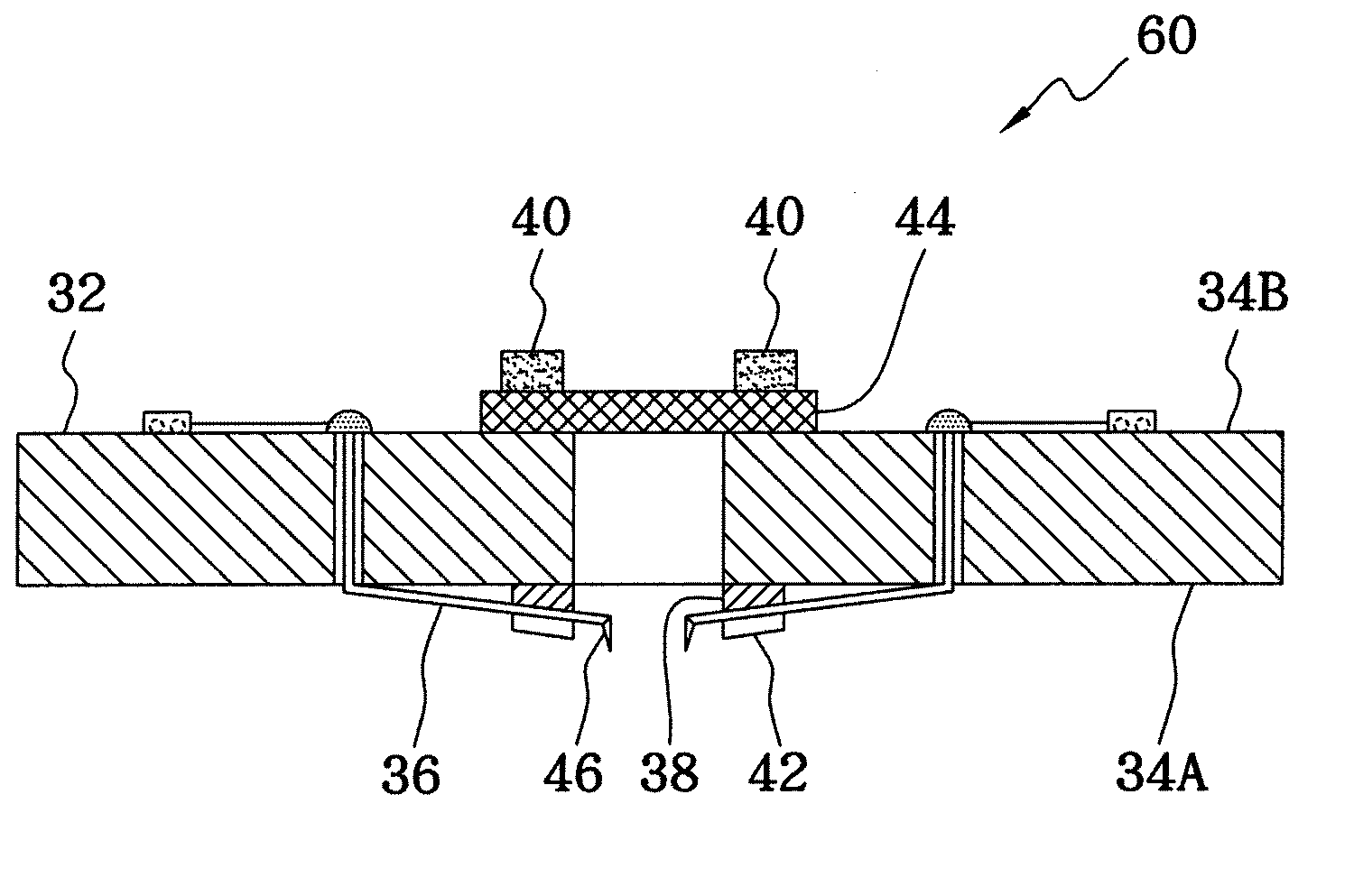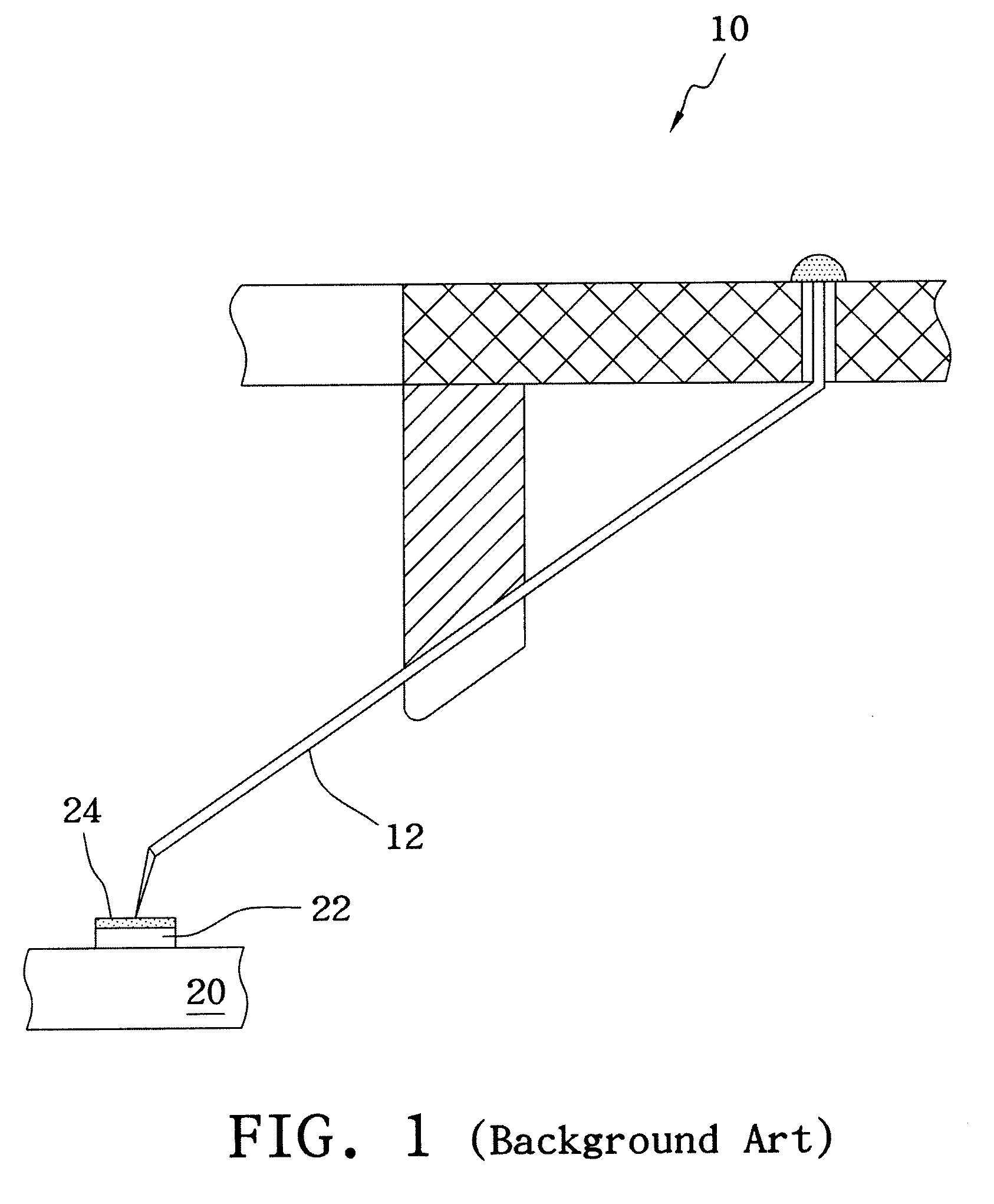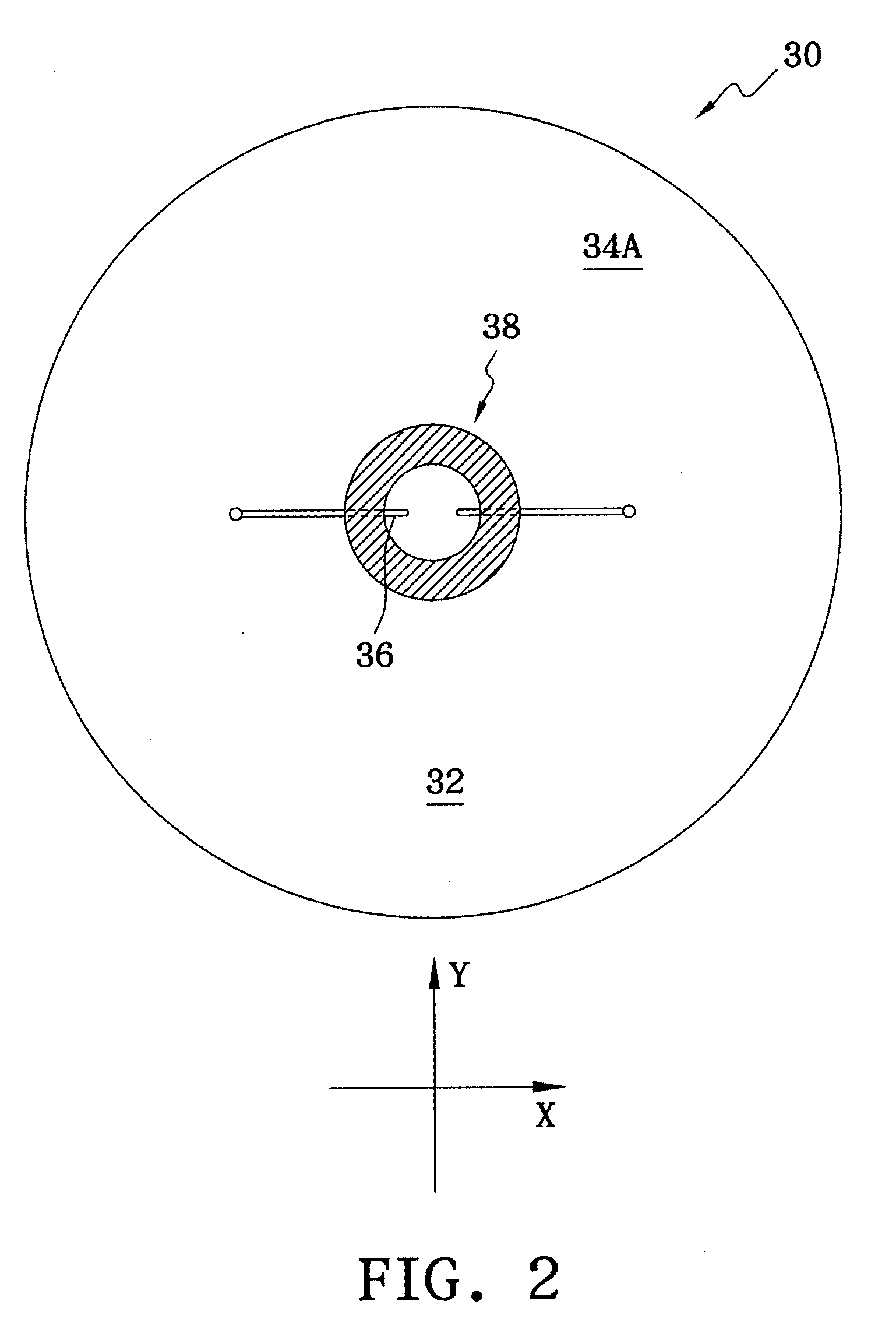Probe card for integrated circuits
- Summary
- Abstract
- Description
- Claims
- Application Information
AI Technical Summary
Benefits of technology
Problems solved by technology
Method used
Image
Examples
first embodiment
[0021]FIG. 2 and FIG. 3 illustrate a probe card 30 according to the present invention. The probe card 30 comprises a first substrate 32, a plurality of probe pins 36 positioned on a first surface 34A of the first substrate 32, and an ultrasonic generator 40 positioned on a second surface 34B of the first substrate 32. The ultrasonic generator 40 may be made of piezoelectric material such as lead zirconate titanate (PZT) to generate ultrasonic energy to vibrate the probe pin 36, and acquire operation power from an external power supply 50. Alternatively, the ultrasonic generator 40 can acquire operation power from the probe card 30 as well. Further, the ultrasonic generator 40 and the power supply 50 may be incorporated in a test head of a test machine (not shown in the drawing), and the ultrasonic generator 40 can acquire operation power from a power supply of the test head to generate ultrasonic energy to vibrate the probe pin 36 when the probe card 30 is assembled to the test head...
second embodiment
[0026]FIG. 6 illustrates a probe card 60 according to the present invention. Compared to the probe card 30 shown in FIG. 4, the ultrasonic generator 40 of the probe card 60 shown in FIG. 6 is positioned on a second substrate 44, which can be assembled to the second surface 34B of the first substrate 32. Particularly, the ultrasonic generator 40 can be positioned anywhere or on an external substrate such as the second substrate 44, and coupled to the first substrate 42 to generate the ultrasonic energy to vibrate the probe pin 36 when the probe card 60 is used to perform electrical testing. Further, the ultrasonic generator 40 can connect to the first substrate 32 or the probe pin 36 in any manner so long as the generated ultrasonic energy can drive the probe pin 36 to vibrate in a reciprocating pattern to scratch the dielectric layer 24.
[0027] As an alternative to the conventional technique for cleaning the probe pin, the present invention can be used to clean the probe pin 36 by pl...
PUM
 Login to View More
Login to View More Abstract
Description
Claims
Application Information
 Login to View More
Login to View More - R&D
- Intellectual Property
- Life Sciences
- Materials
- Tech Scout
- Unparalleled Data Quality
- Higher Quality Content
- 60% Fewer Hallucinations
Browse by: Latest US Patents, China's latest patents, Technical Efficacy Thesaurus, Application Domain, Technology Topic, Popular Technical Reports.
© 2025 PatSnap. All rights reserved.Legal|Privacy policy|Modern Slavery Act Transparency Statement|Sitemap|About US| Contact US: help@patsnap.com



